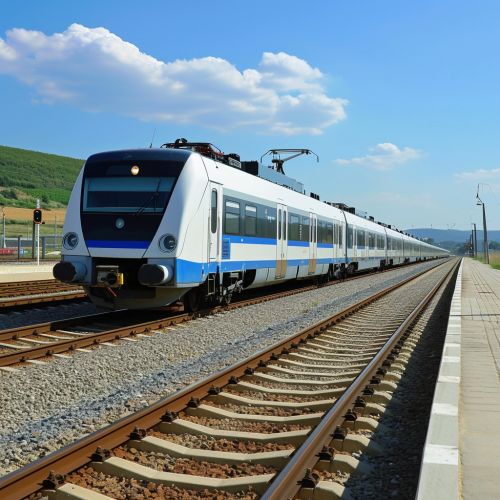Transport in Romania
History of Transport in Romania
The history of transport in Romania is deeply intertwined with the country's development and industrialization. From the early days of horse-drawn carriages and river navigation to the modern era of high-speed trains and extensive road networks, transport has played a crucial role in shaping Romania's economy, society, and culture.
The first significant transport infrastructure in Romania was the river network, which was used for trade and communication. The Danube River, in particular, has been a vital transport artery for centuries, linking Romania with the rest of Europe. The development of river transport was followed by the construction of roads and bridges, which facilitated land travel and trade.
The advent of the Industrial Revolution in the 19th century brought about significant changes in transport. The construction of the first railway line in Romania in 1854 marked the beginning of a new era in transport. The railway network expanded rapidly, reaching all corners of the country and becoming a vital part of the national economy. The railway history of Romania is a fascinating journey through the country's industrial and social development.

Road Transport
Road transport is the most common form of transport in Romania, accounting for a significant portion of the country's passenger and freight transport. The road network in Romania is extensive, covering over 86,000 kilometers. It includes a mix of motorways, national roads, county roads, and local roads. The road network is continually being upgraded and expanded to meet the growing demand for road transport.
Romania's road transport sector is characterized by a high degree of motorization, with a large number of private vehicles. The country also has a well-developed bus and coach transport system, providing both urban and intercity services. The public transport system in Romania is an essential part of the country's transport infrastructure, providing affordable and accessible transport for all sections of the population.
Rail Transport
Rail transport plays a crucial role in Romania's transport system, providing an efficient and environmentally friendly mode of transport for both passengers and freight. The Romanian railway network is one of the most extensive in Europe, with over 22,000 kilometers of track. The railway system is operated by the state-owned company, Căile Ferate Române (CFR).
The railway network in Romania is well-connected, with direct rail links to all major cities and towns. The country also has international rail connections, linking Romania with other European countries. The railway system is continually being modernized and upgraded, with new trains, improved infrastructure, and better services.
Air Transport
Air transport in Romania is a rapidly growing sector, with a significant increase in passenger numbers in recent years. The country has a well-developed air transport infrastructure, with 17 airports offering both domestic and international flights. The largest airport in Romania is Henri Coandă International Airport in Bucharest, which serves as the main hub for the national airline, TAROM.
The air transport sector in Romania is characterized by a mix of full-service airlines, low-cost carriers, and charter airlines. The country's strategic location in Europe, coupled with its attractive tourist destinations, has made it a popular choice for airlines.
Water Transport
Water transport in Romania is primarily focused on the Danube River, which is one of the most important waterways in Europe. The river is used for both passenger and freight transport, with a well-developed network of ports and harbors. The Port of Constanța, located on the Black Sea, is the largest port in Romania and one of the largest in Europe.
The water transport sector in Romania also includes inland waterways, such as canals and lakes, which are used for leisure and tourism purposes. The country's extensive coastline also supports a vibrant maritime transport sector, with regular ferry services to neighboring countries.
Future of Transport in Romania
The future of transport in Romania looks promising, with several major projects and initiatives underway. These include the expansion and modernization of the road and railway networks, the development of new airports and ports, and the promotion of sustainable transport modes.
One of the key priorities for the future is the development of sustainable transport, with a focus on reducing emissions and promoting energy efficiency. This includes the promotion of public transport, cycling, and walking, as well as the introduction of electric vehicles and renewable energy sources.
The future transport strategies in Romania also include the development of smart transport systems, using technology to improve efficiency and safety. This includes the use of digital platforms for ticketing and information, real-time traffic management systems, and autonomous vehicles.
